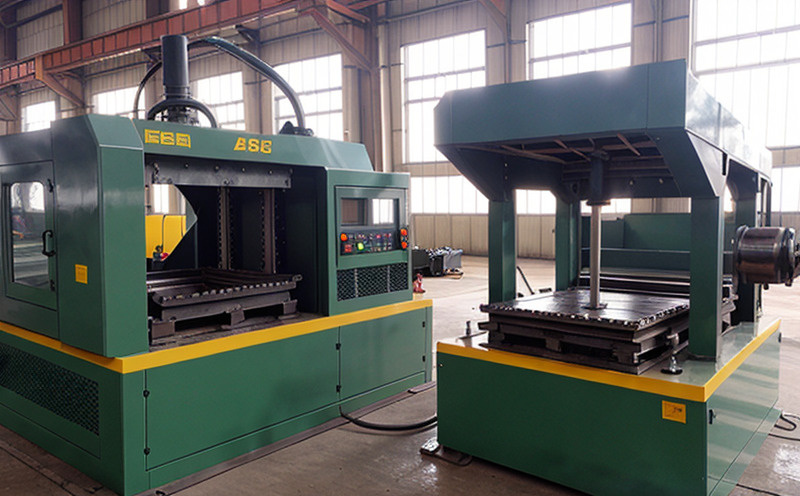ISO 12004 Forming Limit Diagram Testing of Sheet Materials
The ISO 12004 standard provides a method for determining the forming limit diagram (FLD) for sheet materials used in industrial manufacturing and processing. This FLD defines the boundary between formable and unformable regions within a metal sheet, enabling quality managers and R&D engineers to optimize material selection and manufacturing processes. By adhering strictly to this international standard, we ensure precise measurement of the maximum strain that can be applied without causing localized tearing or cracking.
The FLD test is critical for industries reliant on sheet materials like automotive, aerospace, and electronics, where even minor flaws in formability can lead to product failure. This service involves a series of controlled tensile tests performed under specific conditions outlined by ISO 12004:2007. The process begins with rigorous specimen preparation ensuring uniformity across all samples tested.
Our laboratory uses advanced electromechanical testing machines capable of applying precise strains to sheet materials while monitoring their deformation behavior in real-time. Once the test specimens reach their FLD limit, our engineers analyze data points collected throughout the experiment using specialized software tools. These analyses generate detailed reports containing graphical representations of the forming limits for each sample analyzed.
The resulting FLD diagram serves multiple purposes. It helps manufacturers determine optimal sheet thicknesses and geometries for various applications, ensuring both cost efficiency and product quality. Additionally, it provides valuable insights into potential process improvements such as heat treatment or surface finishing techniques that could enhance material performance.
Compliance with ISO 12004 ensures consistent results across different laboratories worldwide, facilitating easier collaboration among international partners involved in joint projects involving sheet materials.
- Customer Impact: Ensures accurate and reliable FLD data contributing to safer products and more efficient production processes.
- Satisfaction: Provides peace of mind knowing all tests adhere strictly to internationally recognized standards.
Benefits
The ISO 12004 forming limit diagram testing offers numerous advantages for industrial manufacturers and processors dealing with sheet materials. Firstly, it allows companies to better understand the capabilities of their raw materials, enabling them to make informed decisions about material selection based on actual performance data rather than theoretical assumptions.
Secondly, this service helps reduce waste by identifying precisely where a particular type of sheet starts becoming too brittle for effective forming without causing damage. This knowledge translates directly into savings when purchasing larger quantities or higher quality grades of raw materials only when necessary.
In terms of process optimization, FLD testing allows manufacturers to explore new ways to improve their manufacturing methods. For example, they might discover that certain heating treatments can extend the formability window significantly, allowing them to create thinner parts without compromising structural integrity.
Another benefit lies in improving product reliability and safety. By ensuring that sheet materials used in critical components meet stringent forming limits, manufacturers contribute towards reducing the risk of accidents caused by material failure during production or end use.
The ISO 12004 standard also promotes transparency within supply chains as all parties involved understand exactly what is expected from each step in the manufacturing process. This clarity fosters trust between suppliers and customers while enhancing overall quality assurance across the entire industry value chain.
Frequently Asked Questions
Customer Impact and Satisfaction
The impact of ISO 12004 compliant forming limit diagram testing extends far beyond just obtaining precise data; it profoundly affects customer satisfaction levels too. With accurate FLD information, manufacturers can confidently produce parts that not only meet but exceed expectations regarding formability and strength.
- Increased Efficiency: By eliminating trial-and-error approaches during design stages, companies save time and resources while accelerating product development cycles.
- Better Quality Control: Rigorous adherence to ISO standards guarantees that every batch of sheet materials adheres strictly to specified quality parameters, leading to fewer defects and rejections downstream in the supply chain.
Satisfied customers translate into loyal clients who return time after time knowing exactly what they will get from us—precise results delivered consistently. This reputation attracts new business opportunities and strengthens existing relationships within competitive markets.
Competitive Advantage and Market Impact
In today’s highly competitive market, having access to accurate ISO 12004 FLD testing can give businesses a significant edge over competitors. Here are some ways our service contributes towards achieving this:
- Improved Product Performance: Understanding the exact formability limits allows manufacturers to design products that perform optimally under real-world conditions.
- Enhanced Reputation: Compliance with international standards enhances brand image and builds trust among stakeholders, including suppliers, customers, regulators, etc.
- Potential for Innovation: Insights gained from FLD testing can inspire novel ideas for product enhancements or entirely new products altogether.
By leveraging this service, businesses position themselves as leaders in their respective fields, setting benchmarks for quality and innovation. As a result, they stand out in crowded marketplaces where differentiation is key to success.





